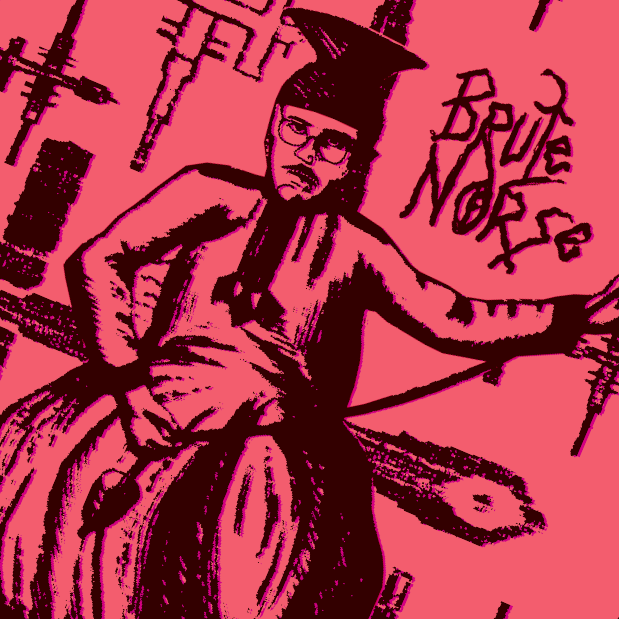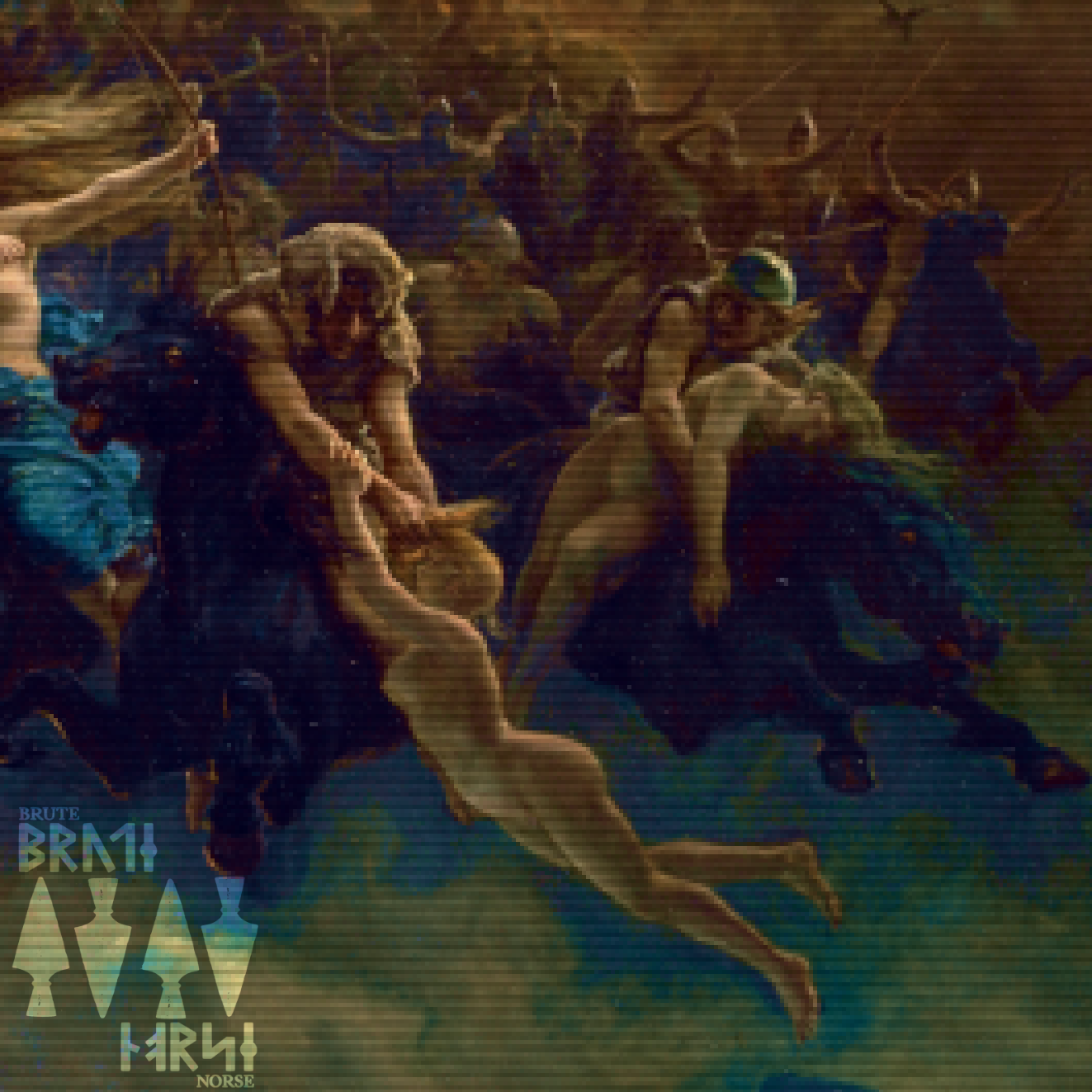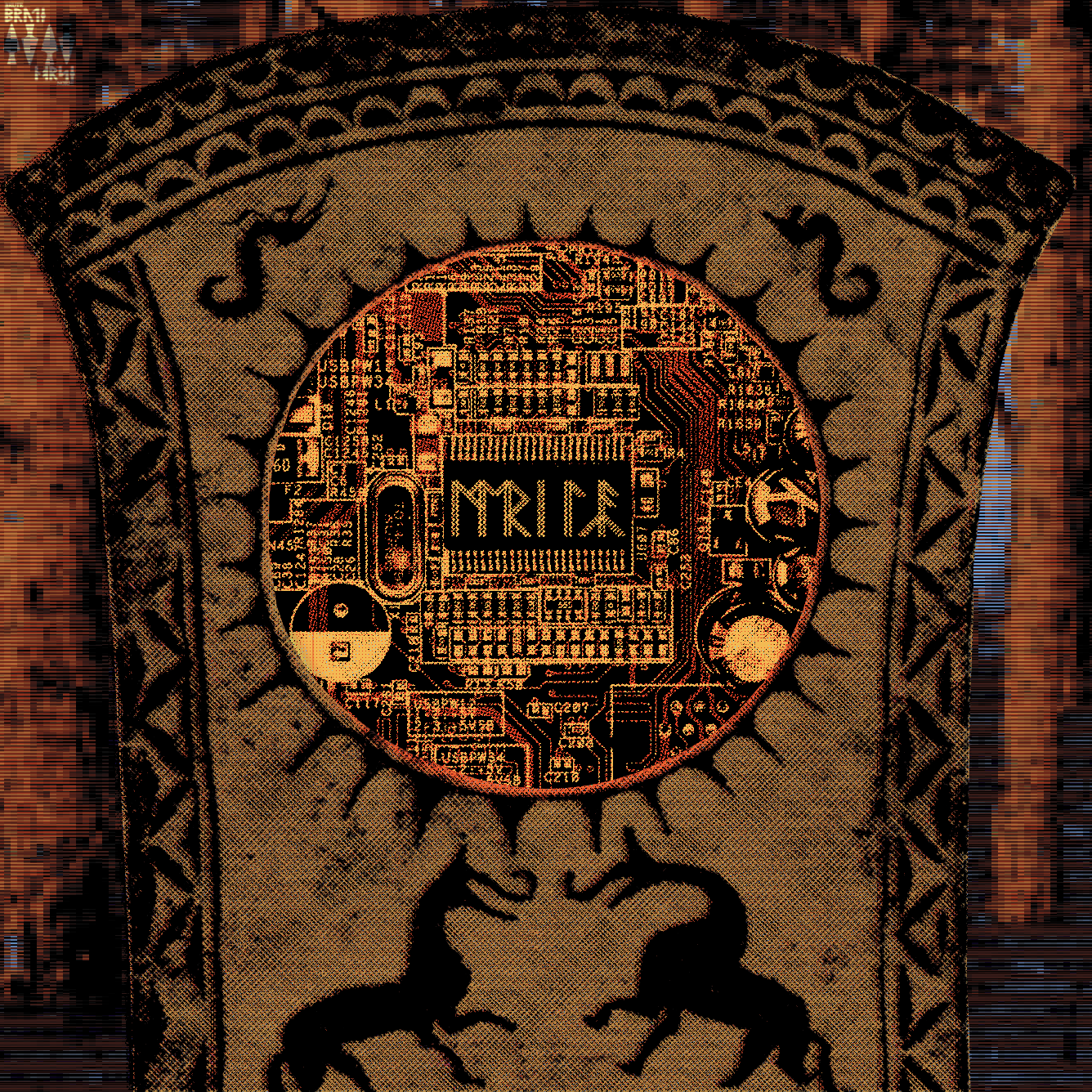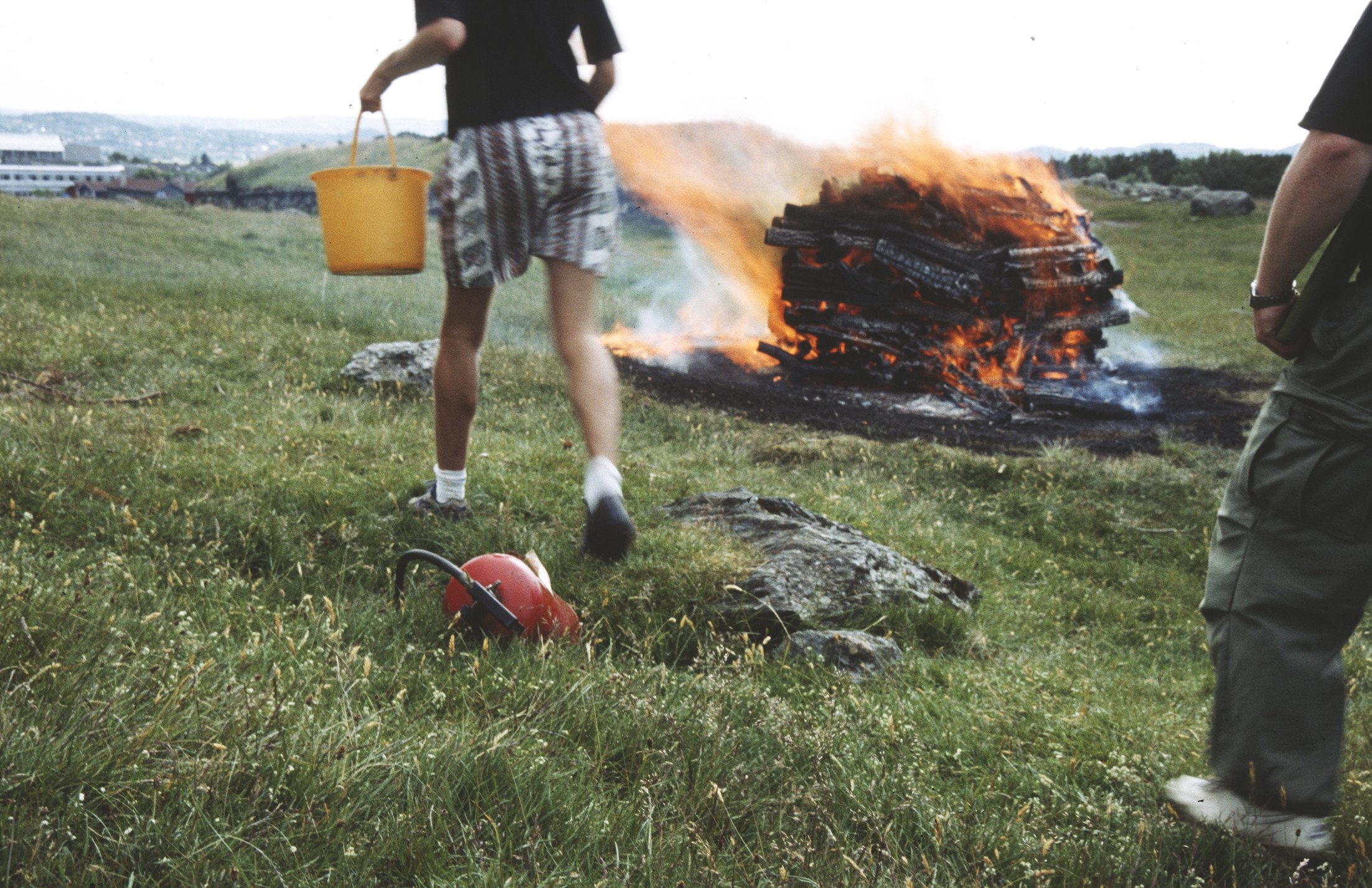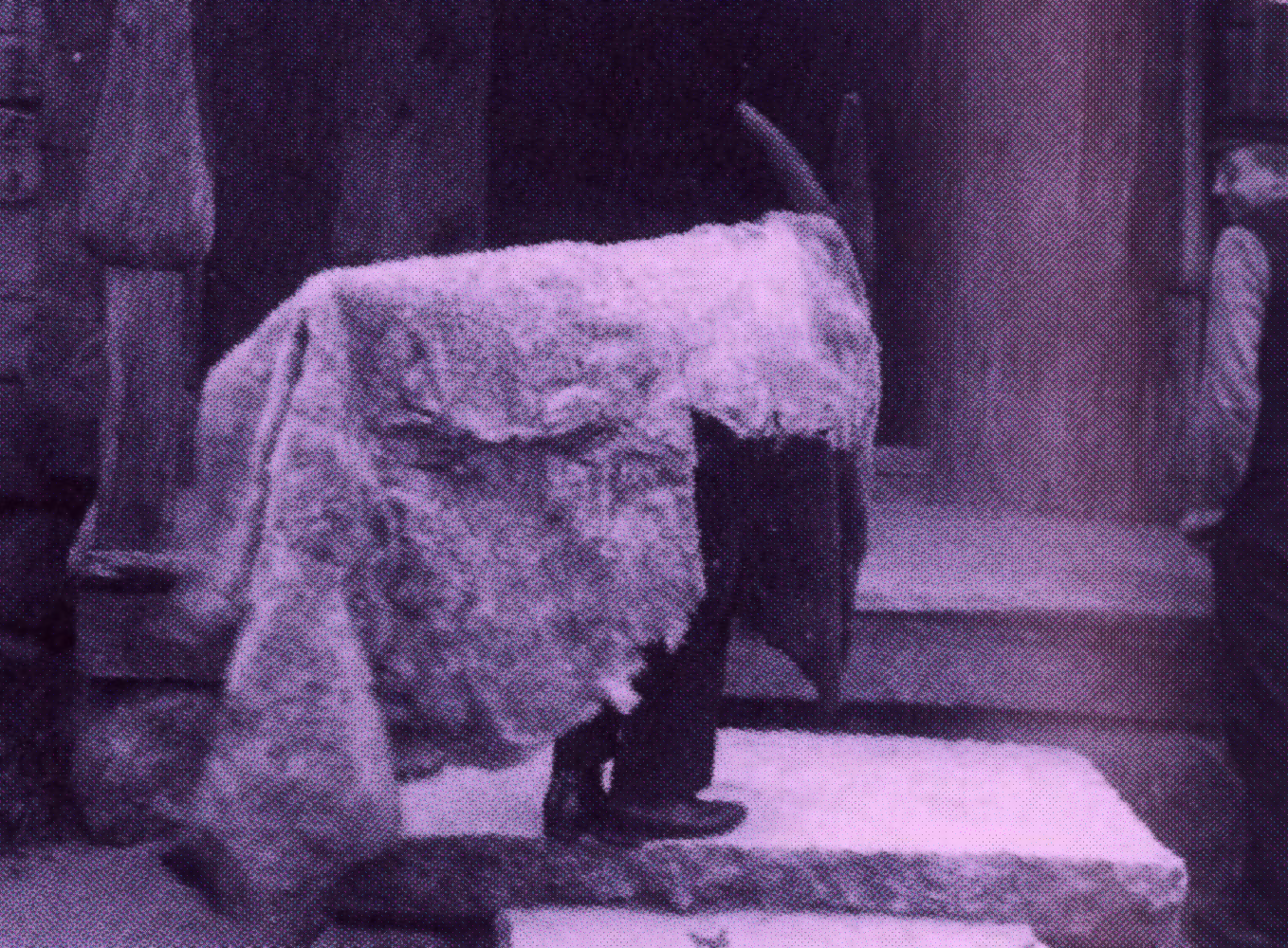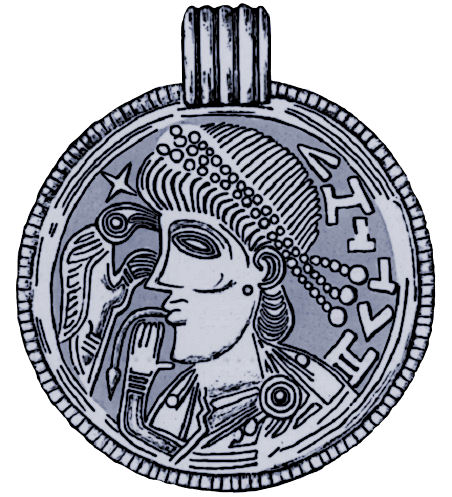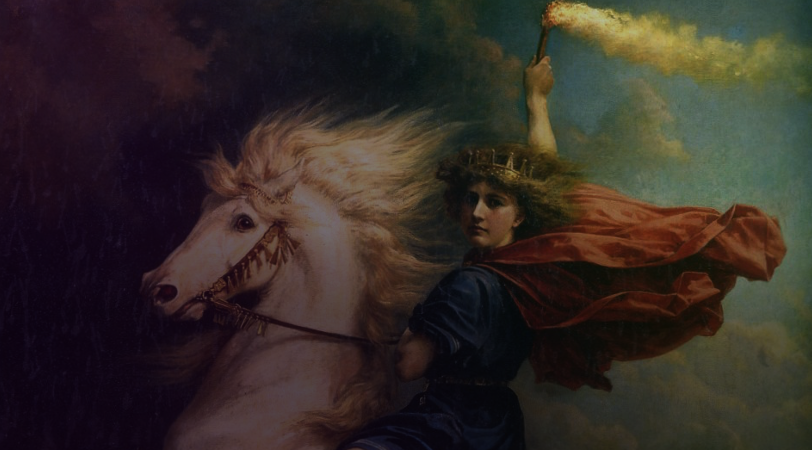Whenever somebody asks me to give them a quick run-down of Norse religion, I start to sweat. Where do I even begin? Most people would wisely start by pointing out that Norse paganism was a polytheistic ethnic religion, with a varied pantheon of gods, descending from a Northern Germanic system ultimately derived from the same, Proto-Indo-European mythology as the Greeks and Romans, but sprinkled with local innovations and influences from neighboring cultures. They might further say that it was a religion based on public sacrifices and communal meals, a religious calendar of annual and seasonal festivals. Even then, we would only be scratching the surface.
How do you explain a worldview? A totally alien way of seeing reality, and the world around us. Not just a different way of seeing things, but a lost way of seeing things. One that we cannot quite grasp, because our language, society, ethics, sense of aesthetics, economy, and livelihood is so utterly different from theirs. They had all these wonderful and peculiar ideas that we can read about, explore, look at, but never we can never relive them or quite fully understand. In the end, much of what we know (which is not a lot) boils down to tedious source critical nerdery, discussion, and comparative analysis. This work might seem dry and uninspired to the uninitiated, but it opens up a world of new ideas you would not get by simply reading the Prose Edda in translation.
To the people who lived in the 9th century Nordic area, the term of "Norse religion" would have been an alien concept. This odd conglomeration of myths and practices were simply their siðr, their "custom". Norse religion was expressed, not just in grandiose and bloody animal sacrifices, or elaborate burial practices for the elite, but also mundane every day tasks, language, figures of speech, law, taxes, hygiene, taboos, ideologies, courtship rituals, family, art, work, play, names, movements, gestures, ethics, etiquette, and how they read the landscape. "Norse religion" covered the entire experience of existence, though by the term we usually mean just a handful of the symbolic gestures and events motivated by their society and worldview. To those who lived in pre-Christian Scandinavia, it was an ontological reality you were born into, with little room for the concept of faith, or the choice of belief. This was a place where every event was the cause of an act, either by seen, or unseen forces.
The spirit in a concrete world
One aspect of day-to-day religious perceptions in the Norse world, was belief in spirits. In modern popular thought, we tend to think of spirits either as a individual and distinct category of being, such as a ghost, or as a property of something else. Like the "human spirit", or "the soul". In one case, we might consider a spirit to have its own personality, set of motivations, properties, and so on. A spirit can for example inhabit (or personify) a body of water, or represent a non-physical manifestation of an ancestor. In the case of the "human spirit", on the other hand, we may suddenly find ourselves engaged in a discussion about the relationship between mind and body. In the Western world of today, this conversation would soon touch upon cartesian dualism, and the idea of the separateness of mind and body.
Cogito ergo sum. I think, therefore I am. But this is not how thing were seen in pre-Christian Scandinavia. Had we taken the conversation back to Viking Age Scandinavia, however, we might find ourselves walking down quite a different intellectual path. A holistic, rather than dualistic discourse on spirit, where the mind-body dichotomy is far less clear. Where even if the spirit is tied to us, it can be both within ourselves, and beside ourselves, travel ahead, be simultaneously inside and outside of us, and be both ourselves and not ourselves at the same time.
Old Norse conceptions of spirits may seem outright irrational and strange at first, but they form quite a coherent, rich, and occasionally even empirical system of belief, though the edges are blurry, the waters muddy, and the ideas overlap and intersect all over the place. First of all, spirits aren't necessarily the same as "invisible entity". The Old Norse world had a large variety of unseen beings, whether naturally invisible, or stealthy by choice. While we can argue that some creatures, such as the so-called vættir (literally "things"), such as giants, trolls, dwarves, elves, and revenants, in fact constitute spirits in various forms, they will not be discussed here. Rather I will concern myself with perceptions on spirits in the narrow-yet-wide sense of "tools, properties, emanations, or companions of human beings".
The sensual world and the spirit world
Relating to the mind-body problem above, it feels redundant to point out that our experience of the world is mediated by our bodies. In the Norse view of the world, the body and its functions provides means for all manner of metaphorical thought: The world was created from the body of the pre-cosmic giant Ymir, and royal poets invoked a king's right to rule by portraying him as a god who has sex with the earth. But even without these culture-specific ideas, we can all relate to the basic truth that we perceive the world sensually, through sight, sound, taste, smell, and touch.
In Norse culture, the spirit world might have made itself quite tangible through a very simple, involuntary bodily action: The sneeze. How exactly you respond to a sneeze depends on your native culture. We have all probably heard countless bless yous and gesundheits in our lives, but there are also local, less heard of variants of such formulas. In Scandinavia we commonly say prosit, which is Latin for "may it be beneficial". But I grew up in West Norway, where a different version of the sneeze-formula also exists. Whenever I sneezed in childhood, many of the adults around me would say something along the lines of "are you expecting visitors?", "your friends are coming over", and so on. Of course, my young mind was quite stirred by the fortunes my grandmother, mother, or nanny would tell each and every time snot exploded through my nostrils.
Some interest was invested in the amount of consecutive sneezes. Because, apparently, you would sneeze once for every visitor. Being a child, assuming somebody would come knocking in the afternoon wasn't boldly speculative, either. As far as I was concerned it was a cute, folksy expression, like a nursery rhyme, or some fable you tell to entertain the kids, or shut them up. Neither myself or any of my elders really thought any more about it.
It was only much later that I came to realize the apparent antiquity of this common phrase, and how it related to a much more complicated network of ideas associated with spirits, psychic emanations, forerunners, prophecy and fate. The epiphany came to me when I read Orkneyinga saga where the viking Sveinn Ásleifarson foresees an incoming ambush thanks to a sudden itch in his nose.
Breath, wind, spirit, mind
Essentially, the irritated nostril ties in with a Nordic folk belief that spirits can enter or exit a host body through the nostrils and mouth. In other words, through respiratory passages. The Old Norse terms ǫnd ("spirit") and andi ("breath", but also "spirit") share the same etymological root, and carries on into the Scandinavian languages. For example in Norwegian 'ånd' ("spirit, ghost") and 'ånde' (breath). There are similar etymologies from different roots in the Indo-European languages, such as Latin , from whence the English 'spirit' derives, and Sanskrit ātmán. The association of spirit with breath is undoubtedly ancient. We observe that we breathe as long as we live, and when we don't, we die. Our bodies become lifeless, the spirit has departed, and so has the breath.
Though the notion probably dates back several millennia, simply judging from the comparative evidence, the earliest and most compelling evidence I can think of comes from the Migration Era, where odd spirals, arrows, shapes and animals often seem to emanate from the mouths of humans depicted on brooches and bracteates.

